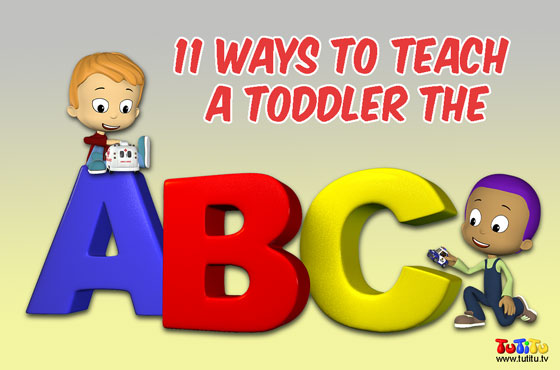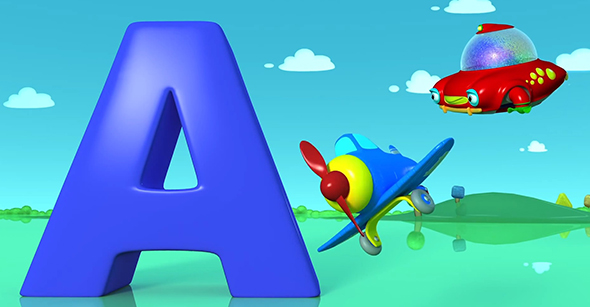Is it time for your toddler to start a lifelong relationship with the ABC’s?
Although learning to identify letters shouldn’t be something parents stress over, a supporting home environment can help a preschooler kick-start life as a reader. According to the National Institute for Literacy, early literacy skills have a clear and strong relationship with skills measured later on, such as reading comprehension, writing abilities, and spelling.
Here are 11 creative ways to introduce the alphabet to children 2-6 years old. No flashcards or memorizing needed. Choose an activity that fits your needs – as long as the alphabet letters and written words function as a fun and familiar part of your toddler’s life, you’re helping them develop important early literacy skills! Just remember- every child learns differently. Learning the ABC’s is not a competitive sport! Give it time, and enjoy the ride!
#1: Watch Alphabet Videos
Alphabet videos for kids are probably the most common way for 21-century toddlers to learn their ABC’s. Many ABC videos for toddlers are available online; here at TuTiTu we have two of them! Our ABC song is short and sweet, and can help kids memorize the entire sequence of alphabet letters. The longer, more elaborate alphabet video (see below) presents a toy or object that begins with each letter, a practice which experts say helps kids develop an understanding of how letters relate to sounds, and sounds come together to create words.
#2: Sing the Alphabet Song
Music has probably been used to help people remember since the dawn of time. When your toddler knows the song well, try challenging them to sing together with a sibling or friend, with each participant singing one letter in turn, but without losing the rhythm of the music. It’s harder than it sounds!
#3: Read Alphabet Books
You won’t only teach your toddler the ABC, you would also develop their ‘print-awareness’, an important pre-literacy skill which includes understanding how books are used (e.g. to left to right, front to back), and being able to share a book with an adult as a regular part of life.
#4: Letter Shapes Body Postures!
Things experienced through the body are often easier to remember. You can do this standing up, or lying on the floor. Hint: it’s easiest when there are a few kids playing, as some letters are difficult to recreate on your own. Take pictures of your creations and show the kids how the letter shape they created looks. You can even share the results with us, and we will feature them on our Facebook page!
#5: Sort Items
Sort items according to the letter their name starts with. This can be done with pictures of family members, stuffed animals, clothing items, or any other set of objects your child is familiar with and can easily name. This is a good exercise in both letter recognition and categorization- excellent for cognitive development!
#6: Create the Letter Shapes
Building blocks, playdough or Legos- create letter shapes to enhance fine motor skills while also making the shapes of the ABC’s familiar to the kids.
#7: Encourage Your Child to Write
Write the first letter of an object’s name next to its picture when using coloring pages. With older children who have already mastered the basics of letters, move on to writing whole words. It is recommended to begin with a word that has a special and positive meaning for the child, like her own name. If the child’s name is long or contains difficult letters, start with other short and positive words, like “mom”.
#8: Play A Game of “What Begins With…”
Take turns to see who can find more words that begin with each letter-sound. You can even play this while traveling or going to the supermarket, and further complicate the task by limiting acceptable words to things you can see through the window or around you.
#9: Buy ABC magnets
Put them on a surface suitable for the child’s height. Encourage kids to play with the letters and show them how to create words while sounding out each letter on its own.
#10: Bake Letter Shaped Cookies
Bake with the kids! Use the names of the letters in the process, and when the cookies are ready- eat the letters that make up the child’s name. This is a great opportunity to compensate the kids who have longer, harder to write, names- they get more cookies!
#11: Do It Yourself!
Create your own letter games! Print big pictures of each letter, and glue or tape them to a set of building blocks you can play with to create words. Make your own “alphabet memory game” with cards displaying upper-case and lower-case letters. If the child is old enough- let him or her help make the game. Playing with a game you created yourself is even more fun!
What’s your child’s favorite way to learn letters?
Share your thoughts in the comments!


